
Continent: Europe
Country: France
Weight: 700 – 1100 kg
Height: 158 – 170 cm
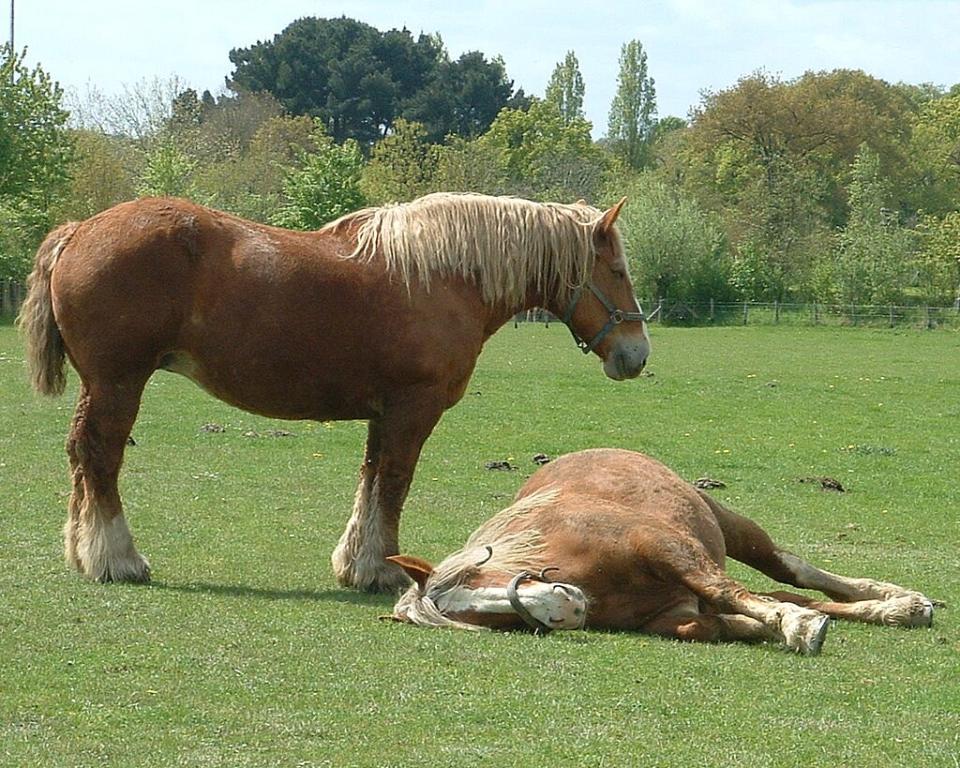
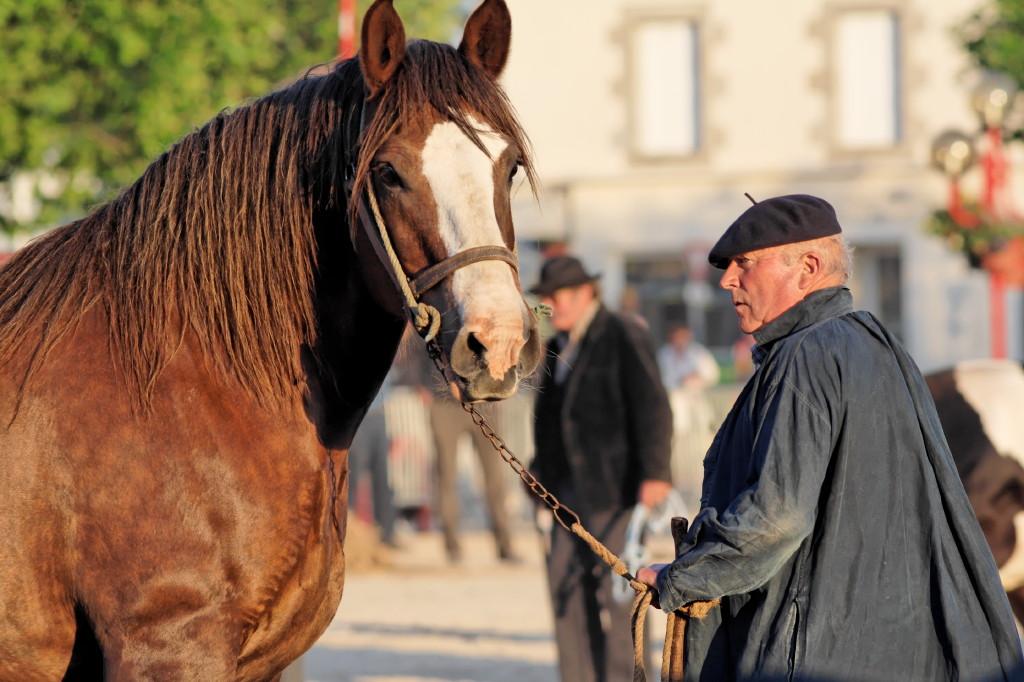
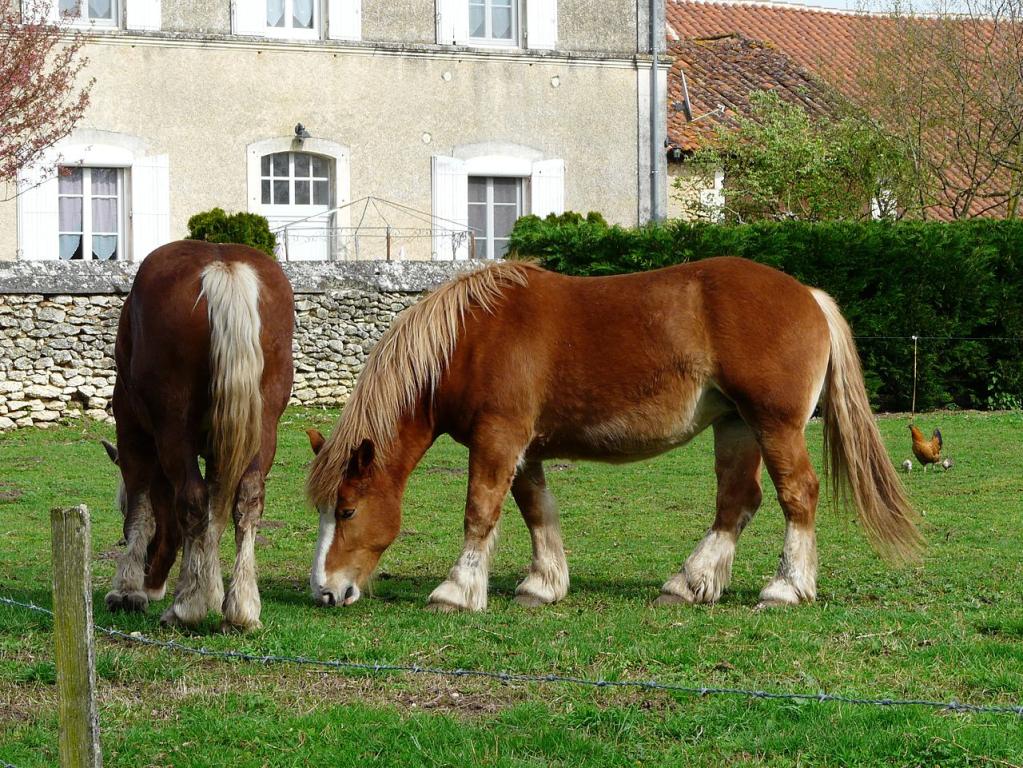
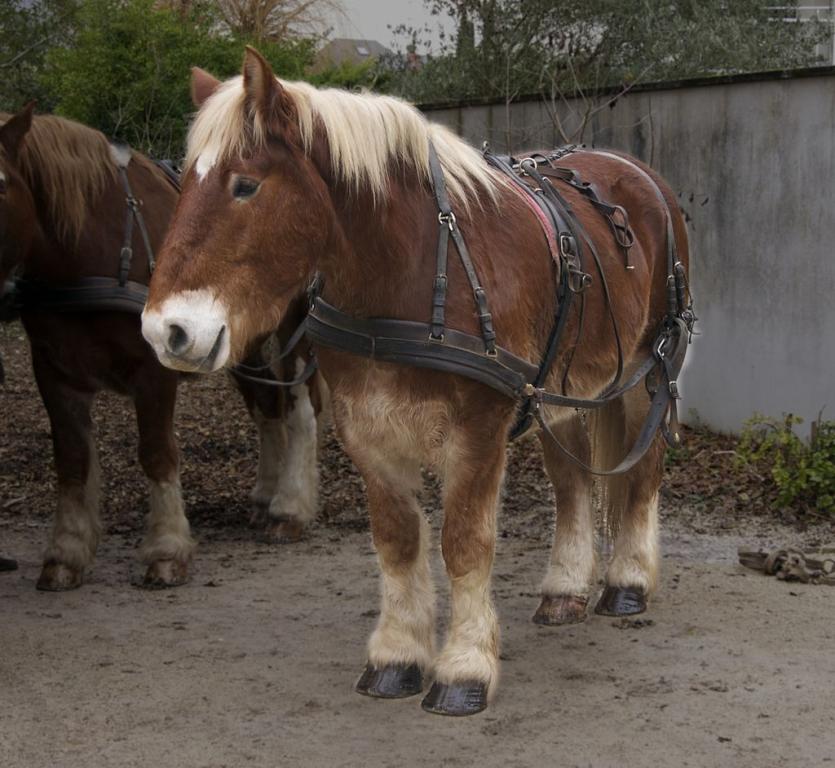
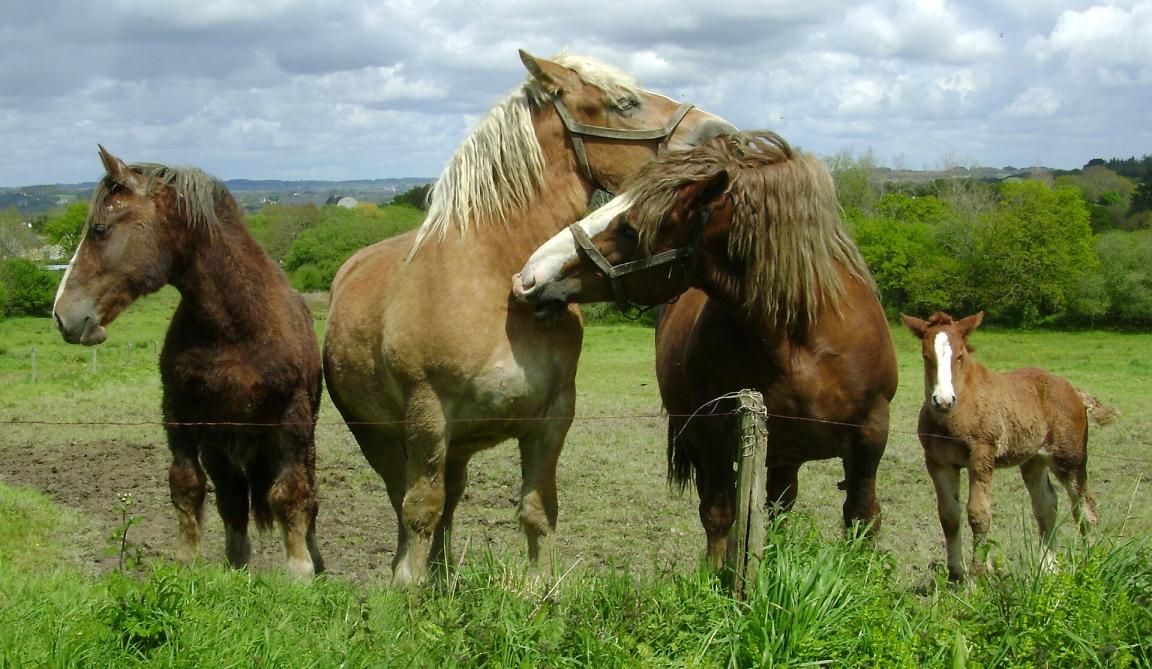
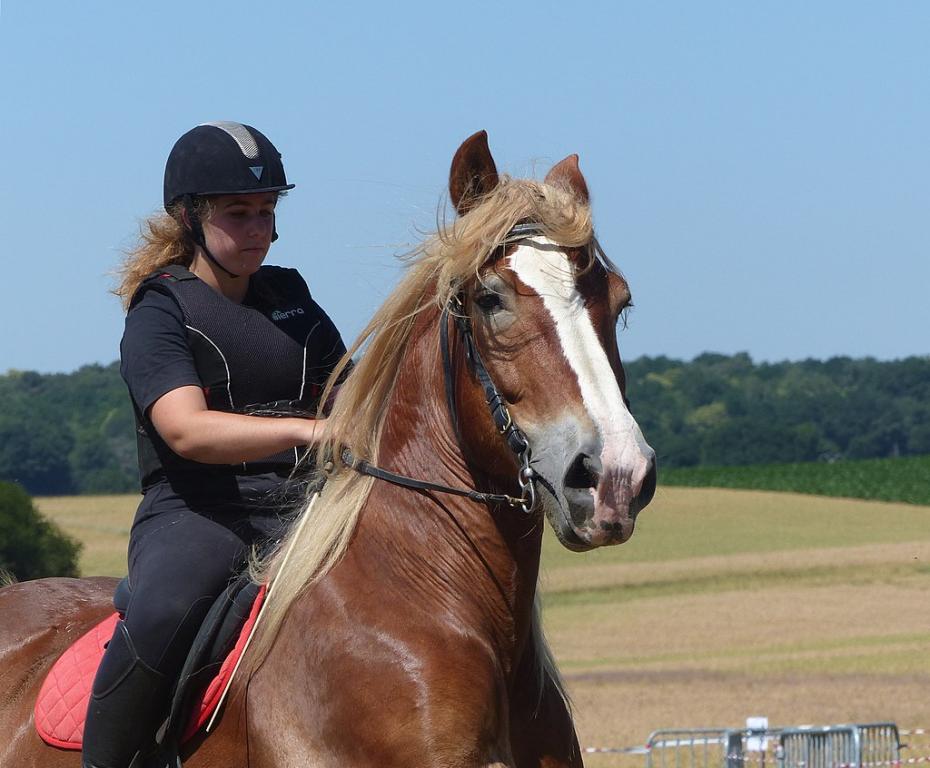

The Breton Horse originates from the region of Brittany, in the west of France, particularly from the departments of Côtes-d’Armor, Finistère, Morbihan, and Ille-et-Vilaine. It developed in an area of granite soils, rolling hills, and an oceanic climate, which shaped a horse that is hardy, enduring, and well-suited to demanding agricultural work.
The Breton Horse is deeply rooted in Brittany’s rural history. As early as the Middle Ages, robust horses resulting from crosses between native stock and Oriental mounts brought back from the Crusades (notably the so-called “Bidet Breton”) were used in armies, farming, and later for heavy transport.
Two major types have historically coexisted:
– The Postier Breton, a lighter type, resulting from crosses with Norfolk or Hackney horses, used for fast harness work.
– The Trait Breton, a heavier type, used for agricultural and forestry work.
The Breton Horse is also a strong cultural symbol of Brittany, still celebrated in many traditional festivals and rural processions (pardons). Today, it is recognized as an element of the region’s living heritage.
The Breton Horse has been bred historically and continues to be bred primarily in the region of Brittany, though it has also expanded to other parts of France and even internationally thanks to its success in crossbreeding.
Main Breeding Area (historical and current) :
Brittany: Côtes-d’Armor, Finistère, Morbihan, Ille-et-Vilaine
This region remains the core of Breton horse breeding, with numerous stud farms, agricultural fairs, and selection centers.
Secondary Breeding Areas in France :
– Pays de la Loire: Loire-Atlantique, Maine-et-Loire
– Normandy: Manche, Calvados
– Nouvelle-Aquitaine and Occitanie: some breeders have established farms here, especially for traction work or breeding purposes
– Massif Central: particularly for crossbreeding with local French draft breeds
The Breton Horse holds a significant place in the French and European equine genetic heritage, as both a foundational and improving breed in the development of draft and working horses.
Foundational Role and Pioneer Status :
The Breton Horse is one of the oldest French draft breeds, with well-established bloodlines dating back to the 19th century. Its stud-book, opened in 1909, helped to structure and preserve a strong and consistent genetic base. The existence of two branches Postier and Trait has allowed for genetic diversity suited to various uses such as driving, draught work, and crossbreeding.
Recognized as a Genetic Improver :
The Breton Horse has been widely used to enhance other draft breeds, both in France and internationally. It has contributed genetically to several breeds, including:
– The Comtois Horse
– The Trait du Nord
– The Auxois Horse
– The Ardennais Horse
As well as to foreign breeds, such as the Canadian Horse, some Italian draft horses, and various mountain horse breeds in Eastern Europe.
It is known for passing on:
– Excellent conformation for traction (e.g., sloping shoulder, short loin, strong back)
– Exceptional hardiness
– High fertility, valuable in breeding programs
– Good temperament, facilitating selection for work purposes
A Living Genetic Reservoir :
In a context of overall decline of draft horses, the Breton Horse serves as a living genetic reservoir, preserving unique traits valuable for future selection programs especially in agroecological, forestry, or sustainable animal traction initiatives.
The history of the Breton Horse is long and deeply rooted in the lands of Brittany, marked by multiple influences and successive adaptations to military, agricultural, and economic needs.
Ancient Origins (Antiquity – Middle Ages) :
As early as Antiquity, Breton horses were known for their endurance and robustness.
In the Middle Ages, small rustic local horses known as "Bidets Bretons" were used by peasants and soldiers. These lively and hardy mountain horses served in both warfare and farm work.
Oriental Influences (12th – 14th centuries) :
During the Crusades, Breton knights brought back Oriental horses (Arabian, Barb), which were crossed with local horses.
This blend produced a stronger and faster horse.
The Breton horse then became highly sought after for heavy cavalry.
Emergence of Specialized Types (17th – 19th centuries) :
Over the centuries, breeding was organized around two main types:
– The Trait Breton: powerful and massive, used for agricultural work
– The Postier Breton: lighter and faster, from crosses with the Norfolk Roadster and Hackney, used for postal service, transport, and artillery
These two branches were officially recognized and developed during the 19th century.
Creation of the Stud-book (1909) :
In 1909, the Stud-book of the Breton Horse was officially created to organize breeding and selection.
The breed was standardized, and breeding competitions multiplied, notably in Gourin, Loudéac, and Rostrenen.
Peak and Expansion (1900–1950) :
The Breton Horse reached its peak between the two World Wars and in the post-war period.
It was widely used in farming, the military (artillery, transport), mining, and the timber industry.
It was exported worldwide, contributing to the improvement of other breeds (in Italy, Canada, Eastern Europe).
Decline and Shift in Purpose (1950–1980) :
With the mechanization of agriculture, demand for draft horses dropped sharply.
The Breton Horse was then directed toward horse meat production.
The Postier branch declined more significantly, being less suited to this purpose.
Heritage Revival and Functional Reuse (1980 – today) :
From the 1980s onward, breeders and institutions launched conservation programs.
The breed was redirected toward tourism, ecological work, cultural events, and forestry.
The Breton Horse has become a living symbol of Breton heritage, present in festivals, living museums, and rural celebrations.
The Breton Horse has stood the test of time by adapting to the changing needs of society. Its robustness, good temperament, and versatility make it today a breed that is functional, culturally valuable, and full of future potential.
The Breton Horse is known for its exceptionally gentle temperament, docility, and practical intelligence, making it a reliable work partner—even in the hands of inexperienced handlers.
– Calm and placid: Maintains composure in noisy or stressful environments (e.g. fairs, forestry work, roads)
– Docile: Easy to handle and train, responds well to voice commands and routines
– Cooperative: Naturally inclined to work with humans, especially in draught and driving tasks
– Attentive and responsive: Not nervous, but aware of its surroundings, making it safe in urban driving or tourist areas
– Tolerant and patient: Accepts extended handling (grooming, care, harnessing) and slow-paced activities, making it ideal for public interaction and educational events
Herd Behavior and Pasture Life :
The Breton Horse is sociable with its peers and typically holds an intermediate position in the herd hierarchy.
It adapts well to group living or paddock life, although it retains a strong herd instinct.
Adaptability :
The breed tolerates outdoor life and harsh weather conditions (rain, cold, wind) very well.
It can adapt to a wide variety of contexts:
– Agricultural work
– Tourist carriage driving
– Forestry traction
– Animal-assisted therapy
– Mixed stable environments
Despite the overall decline in the agricultural use of draft horses, the Breton Horse benefits from positive and diversified prospects, thanks to its reintegration into modern uses and an active conservation policy.
Diversification of Uses :
– Agricultural and forestry work: renewed interest in animal traction for organic farming, vineyards, low-impact forestry, and protected natural areas
– Tourism and driving: the Breton Horse is appreciated for leisure activities, carriage rides, driving treks, and horse-drawn transport in both urban and rural settings (e.g. school transport, waste collection)
– Draft horse meat: although a sensitive topic, this remains an economic reality for some breeders
– Ecotourism and living heritage: many local communities and tourist organizations promote the Breton Horse as a symbolic part of Breton identity
Institutional Support and Conservation Programs :
The breed benefits from the support of France Trait, the French Institute of Horse and Riding (IFCE), and the National Association of the Breton Horse.
It is included in biodiversity conservation programs, which highlight its hardiness, fertility, and genetic diversity.
Targeted breeding subsidies are available in certain departments or via the Common Agricultural Policy (CAP).
Reasoned Selection and Innovation :
Current breeding efforts focus on horses that are well-balanced, functional, versatile, and have a good temperament.
Research projects including those on low carbon footprints, climate change adaptation, and integration into agroecological systems position the Breton Horse as a contributor to sustainable development.
Challenges to Address :
– Aging breeder population
– Geographic concentration of breeding operations
– Preservation of lineage diversity, especially the lighter Postier branch
In summary, the Breton Horse is a breed with a promising and sustainable future, provided that efforts in adaptation, cultural heritage promotion, and agroecological innovation continue.
The Breton Horse is known for its hardiness, longevity, and resistance to disease. Thanks to selective breeding focused on robustness and traditional outdoor rearing conditions, the breed generally shows few major health issues.
There are no known genetic predispositions to serious hereditary diseases, unlike some more specialized breeds. Its strong bone structure, clean limbs, and functional conformation help limit the risk of lameness or locomotor problems even when used for draught work.
However, as with all draft breeds:
– Overfeeding or lack of exercise may lead to metabolic disorders (e.g. laminitis, obesity)
– Regular hoof care is essential, especially for horses kept on wet or soft ground
– Veterinary monitoring is recommended for animals used intensively (e.g. tourism, forestry)
When well cared for, the Breton Horse can enjoy a long and stable working life, whether in driving, agriculture, or animal-assisted activities.